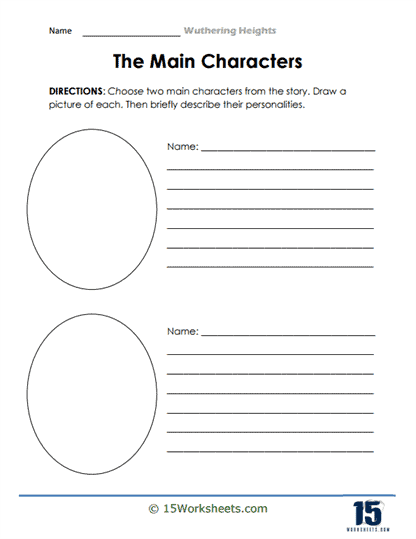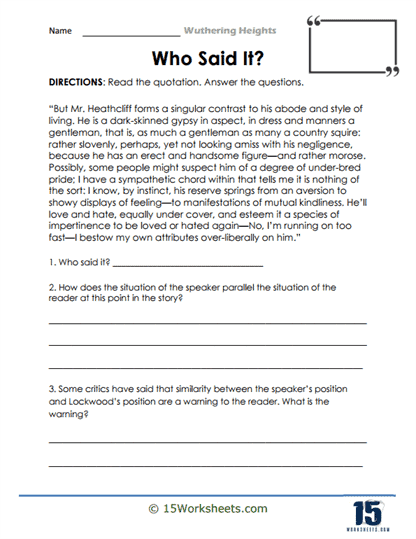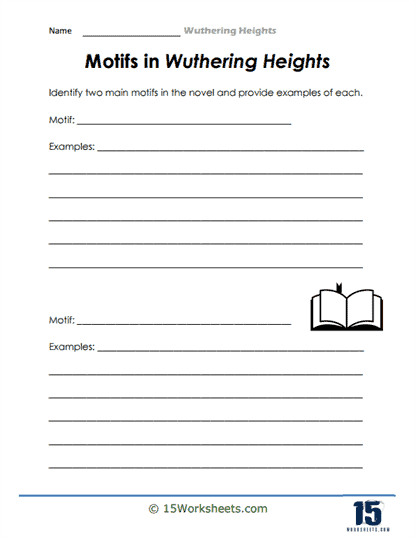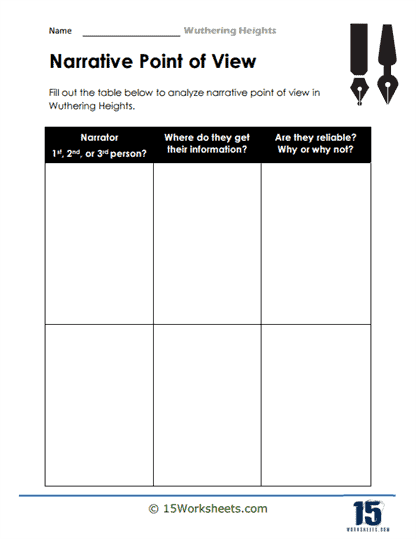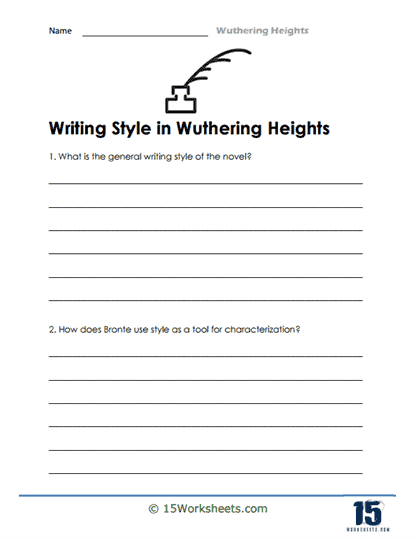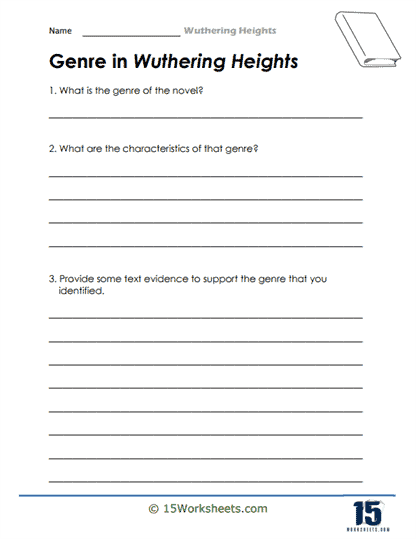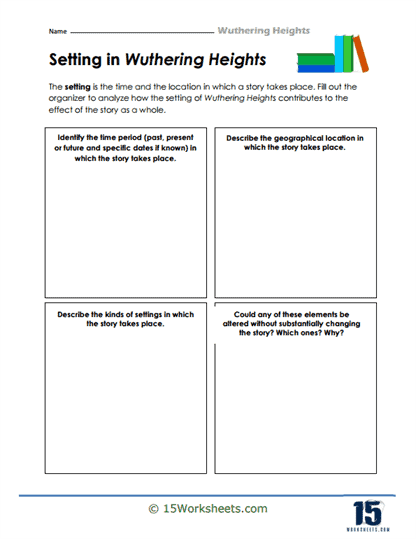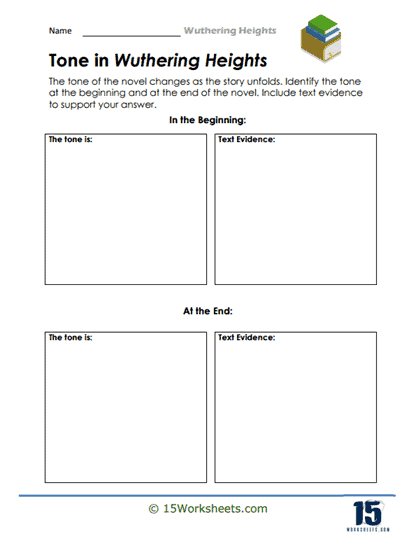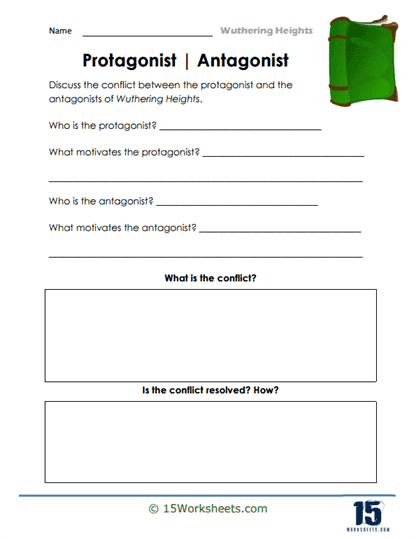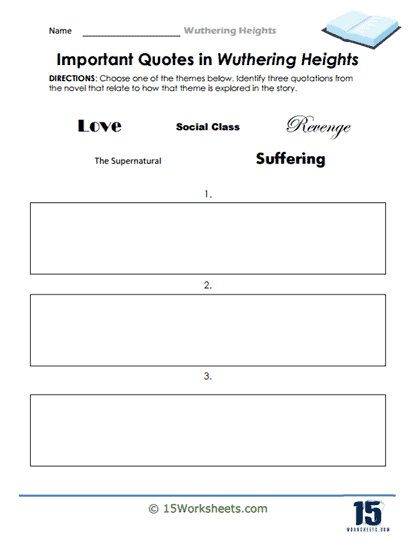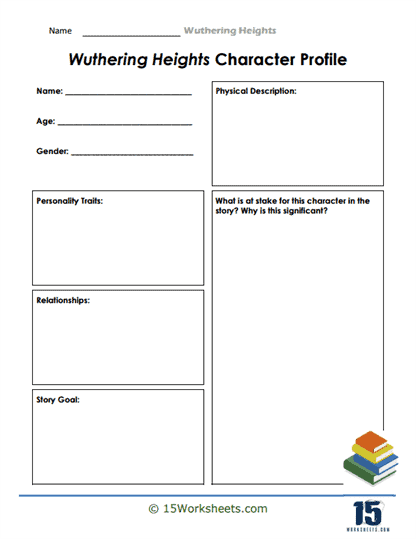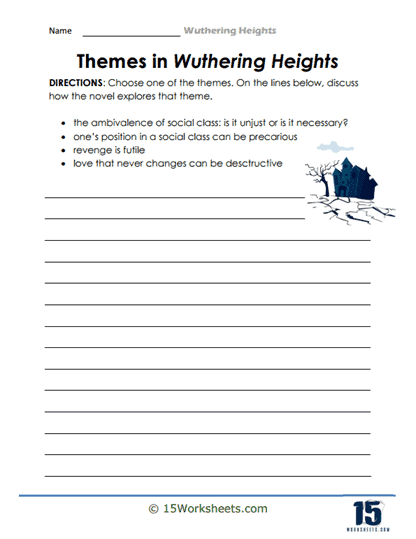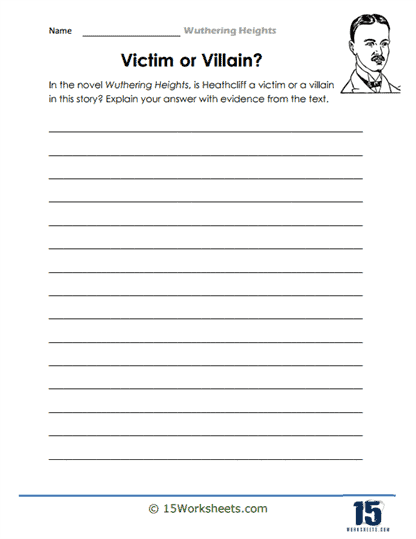Wuthering Heights Worksheets
All About These 15 Worksheets
This collection of worksheets is a comprehensive and engaging educational resource designed to introduce students to Emily Brontë’s timeless classic, “Wuthering Heights.” These worksheets are carefully crafted to immerse students in the dark and passionate world of the novel, encouraging critical analysis, character exploration, and thematic understanding. It serves as a valuable tool for literature educators and students alike.
The Importance of Studying Wuthering Heights
“Wuthering Heights” is a literary masterpiece that holds enduring significance in the world of literature. Understanding and studying this novel offers several important benefits to students:
- Literary Appreciation: Studying “Wuthering Heights” introduces students to the rich and evocative prose of Emily Brontë, encouraging a deeper appreciation for the art of storytelling.
- Character Complexity: The novel is renowned for its complex and morally ambiguous characters, providing an opportunity for students to engage in in-depth character analysis and explore the depths of human nature.
- Exploration of Themes: “Wuthering Heights” explores themes such as love, revenge, social class, and the supernatural. Analyzing these themes prompts students to think critically about their own values and beliefs.
- Historical Context: The novel offers insights into the social norms, gender roles, and class distinctions of the 19th century, fostering historical and cultural awareness.
- Critical Thinking: Encounters with unreliable narrators, multiple perspectives, and intricate plot structures challenge students to think critically and analytically.
- Language Proficiency: Brontë’s poetic and descriptive language challenges students to expand their vocabulary and improve their reading comprehension skills.
- Empathy and Perspective: Exploring the complex relationships in the novel encourages empathy and a greater understanding of human emotions and motivations.
This collection of Wuthering Heights worksheets is a valuable resource that empowers educators to introduce Emily Brontë’s classic novel to students in a meaningful and engaging way. By delving into the themes, characters, and historical context of the story, students not only develop a deeper appreciation for literature but also gain insights into the complexities of human emotions and relationships. This collection equips educators with the tools needed to guide students on a transformative literary journey, fostering critical thinking, cultural awareness, and a lasting love for classic literature.
A Brief Summary of the Book Wuthering Heights
You’ve heard the adage: love is all you need; it is multifaceted and beautiful. But, what about this one: love is incestuous, mentally harmful, and manipulative—digs up your body after you die and wants to be tormented by your spirit forever and ever?
Even though this is not the emotion seen on most Valentine’s Day cards, it sure is the pervasive opinion on l’amour in Wuthering Heights—often voted the #1 Greatest Love Story due to its twisted concept of real love. Not familiar with the only novel that Emily Brontë ever wrote? Here’s a brief summary of the story of revenge.
Wuthering Heights – Background
Emily Bronte’s “Wuthering Heights” is a gothic horror/romance book considered a classic. Ellis Bell was the pen name Bront used when the book was first published in 1847. She passed away the following year after it was made available to the public. It was deemed controversial at the time of the first publication due to the violent themes and the fact that it challenged Victorian standards.
However, it was not until the latter part of the 19th century that the work started to increase sales and began to garner critics’ approval. Since then, the book has gained a reputation for being an essential piece of the English literary canon. It has been reworked several times into a wide variety of media, including radio serials, television series, plays, movies, and musicals.
Brief Summary of the Book Wuthering Heights
Many people, particularly those who have never read the novel, believe that Wuthering Heights is a simple yet emotional love tale. They like to compare it to Romeo and Juliet, set on the Yorkshire Moors. However, people are making a mistake here. The plot is really about getting even with someone; it is a story of revenge.
The story recounts the life of Heathcliff, a mystery gypsy-like figure, from his boyhood (when he is around seven years old) until he dies in his late thirties. Heathcliff advances through the ranks of his adoptive family, only to be demoted to the position of a servant and forced to flee when the young lady he loves decides to marry someone else.
He eventually comes back, having become successful and educated, and immediately begins plotting his vengeance against the two families that, in his opinion, were responsible for the destruction of his life.
Analysis and Redemption
The novel’s location is evocative of Gondal in that it is moorland, and the conflict that it depicts between two families is intense. One of the reviews we read referred to it as “rude and revolting.” Emily started writing another book, but Charlotte tore it up when Emily passed away from TB in December 1848 at the age of 30.
It wasn’t until the 1880s that Wuthering Heights pulled from the depths of obscurity thanks to the efforts of Algernon Swinburne, Matthew Arnold, and G. K. Chesterton, who hailed the novel as having been “written by an eagle.”
Emily Bronte’s Death
In 1847, Emily wrote “Wuthering Heights,” often considered her best work. Sadly, she could never enjoy her book’s success. Emily’s health continued to worsen, which she blamed on unsanitary circumstances and the water poisoning from a cemetery located close by at a church.
She refused medical assistance, claiming that she would not let a “poisoning doctor” get anywhere near her. Emily eventually had a terrible illness (TB) that ultimately led to her death on December 19, 1848.

